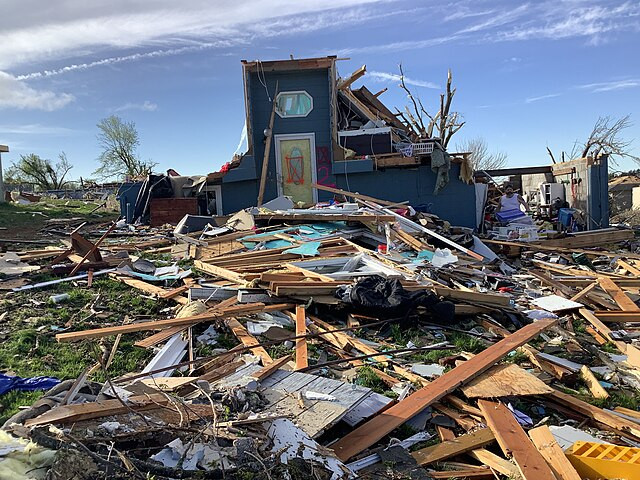Severe weather patterns are expected to affect various parts of the United States this week, ranging from extreme heat in the Southwest to powerful storms in the Plains and significant downpours across southern and central Florida. The National Weather Service's Storm Prediction Center has issued warnings for different types of severe weather that will impact millions of Americans in the coming days.
On Monday, the south-central U.S. faces the threat of strong thunderstorms capable of producing damaging winds, large hail, and possibly tornadoes. This weather pattern will primarily affect areas including western Oklahoma, western Texas, and eastern New Mexico. The storms, which may bring winds reaching up to 80 mph, are expected to extend to parts of Colorado, Wyoming, the Dakotas, and Nebraska by Monday night.
"Large hail and damaging winds are the main threats, though a brief tornado cannot be ruled out," the Storm Prediction Center stated.
As these storms begin to subside, the weather focus will shift to other parts of the country. The Southwest is bracing for scorching temperatures as the first heat wave of the year continues to intensify. Excessive heat warnings will take effect on Tuesday and last through Thursday across Arizona and California's Central Valley. Temperatures in Flagstaff are predicted to range between 105 to 110 degrees, while Phoenix could see afternoon highs between 105 to 112 degrees. The San Joaquin Valley and lower Sierra Nevada foothills in California are also expected to face triple-digit temperatures.
By Wednesday, the heat wave will expand into the central U.S., affecting states as far east as Kansas and Colorado. The East Coast, from Florida up into New England, will also experience consistent 90-degree weather. Despite the eastward expansion of the heat dome, California, Arizona, New Mexico, and Texas will continue to endure extreme temperatures well into the weekend.
The dome of sizzling temperatures in the West early week will engulf the Nation's Heartland starting Wednesday, then spread across the southern & eastern U.S. the second half of the week. While these regions heat up, the Pacific Northwest can expect a cool down by next weekend. pic.twitter.com/jtvmZ0FLpX — NWS Weather Prediction Center (@NWSWPC) June 9, 2024
Last week, record-breaking temperatures were observed across the Southwest, with Phoenix hitting 112 degrees and Las Vegas reaching 111 degrees on Thursday and 110 degrees on Friday. These highs set new records for the respective dates. California, Texas, and central Florida also reported record temperatures during this period.
In contrast to the heat, Florida is set to experience a significant amount of rainfall, potentially alleviating recent drought conditions. Starting Tuesday, southern and central Florida will be drenched by a weather front expected to bring 7 to 10 inches of rain through the weekend. Areas such as Orlando and Tampa Bay could receive 4 to 6 inches of rainfall over the next five days.
The heavy rain is anticipated to end drought conditions in central and southern Florida, where some areas have only received 50 to 70% of their usual rainfall for this time of year. Since last month, central and southern Florida have been experiencing record-breaking temperatures, including Sanford, Winter Haven, and Punta Gorda, which all saw temperatures near or above 100 degrees. Miami, Hollywood, and Key West also hit record highs in May.
Elsewhere, the severe weather is not confined to the Southwest and Florida. Parts of eastern Wyoming, western South Dakota, and western Nebraska are at risk of severe storms capable of bringing hail, high winds, and possibly tornadoes. By Wednesday, eastern South Dakota, much of Minnesota, and western Wisconsin will likely see severe storms, with cities like Minneapolis and Sioux Falls needing to be on high alert.
In addition to these storms, parts of the Midwest, Mid-Atlantic, and Northeast will also experience the heat wave by Thursday and Friday. Some areas in central Virginia and western North Carolina could see record highs, while New York City may experience its first 90-degree day of the year on Friday, later than the average first 90-degree day around May 28.






